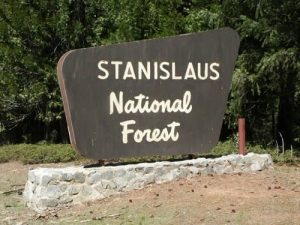Tuolumne Supes Air USFS Draft Forest Plan Concerns
Sonora, CA — This week the Tuolumne Supervisors shared a bit of displeasure along with concerns over draft state forest plans by the US Forest Service (USFS).
Released for a 90-day public comment period back in May was 1,500-plus pages of paperwork pertaining to currently proposed plan revisions and a draft environmental impact statement (DEIS) for the Inyo, Sequoia and Sierra National Forests.
Although the Stanislaus National Forest does not specifically figure into the body of work, as it was understood that these plans may become templates for other forest plans, county officials agreed a thorough review was key. However, the USFS declined an Aug. 2 request by the Tuolumne County Board of Supervisors for a 45-day extension in order to spend more time poring over and responding to the contents of the hefty USFS package.
Displeasure Duly Noted
At this week’s board meeting Board Chair and District 5 Supervior Karl Rodefer called out forest officials for not granting the county additional time. He requested that staff incorporate language to the effect into a letter already drafted and sent to some of the USFS contacts in time to meet the agency’s originally stated deadline of Aug. 25.
Explaining his direction, with which the rest of the board concurred, Rodefer stated, “I will just say that the reason that I offered the change [to the letter] is that we stated that we wanted to be very explicit in our disapproval over the lack of approval to the extension that we asked for.”
Natural Resources Committee Chair and District 1 Supervisor Sherri Brennan, with help from committee member, District 2 Supervisor Randy Hanvelt and county staff, previously prepared the board’s nine-page NFS response letter, which outlined numerous areas of concern as well as recommendations.
Figuring The Region’s Future Into The Forest Plan
The communication noted that, with 75 percent of the Tuolumne County land base owned by the USFS, the area is heavily dependent on revenues generated by the multiple uses of public lands — as well as directly interested in advocating healthy forest ecosystems for the obvious safety of residents and visitors.
The letter specifically asked the USFS to ensure that its draft plans and DEIS expand upon the multiple use mandate established by Congress a half-century ago by accepting minor conflicts between uses while working to maximize achievement and balance between activities such as grazing, mining, timber management, wildlife and recreation in ways that will ensure best-outcome economic, social and ecological enhancements to the region.
Among the supervisors’ areas of concern outlined to the USFS were that the draft forest plans and DEIS do not adequately address and consider current forest conditions such as the state’s tree mortality emergency, which is already threatening long-term forest health, public safety and future property and recreation opportunities.
Recommendations Reflect Regional Industries
Along with county’s comments, the letter made several recommendations. Among these are that the USFS directly support grazing as part of forest management best practices; incorporate sawmill and timber harvest infrastructure and data in the forest plans; address the state of the biomass power plant industry; and account for wildfire, insect and disease impacts on water quality.
The supervisors also asked that the vision outline of future forest plans pertaining to the region better integrate multiple uses such as grazing into watershed management; acknowledge the social and economic benefits of rangelands in the central, southern and eastern Sierra Nevada; and move away from unrealistic single-species management practices that directly conflict with species conservation.

